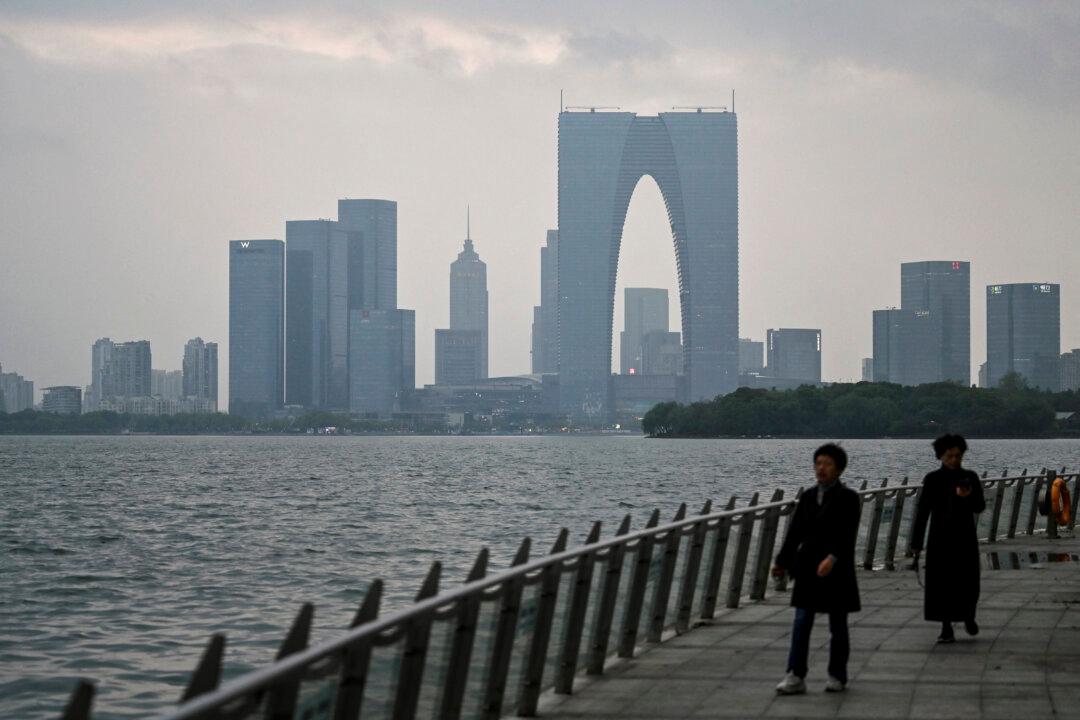In mainland China, the word “liberation” is commonly used to describe the communist takeover in 1949, and with good reason, we are told.
The People’s Republic of China, if official narratives and the conventional historiography are to be believed, is a product of revolution, the savior of China from a century of internal chaos and failed attempts to catch up to and defend against the industrialized colonial powers responsible for her misery. In the words of Chairman Mao, China had finally “stood up.”
But did it really? In his latest work, The Tragedy of Liberation, Frank Dikötter describes the Chinese Communist Party’s early years of rule, from its consolidation of Soviet-occupied Manchuria after World War II to the retreat of the Nationalists to Taiwan, through the bloody campaigns of collectivization and political repression up to the eve of the cataclysmic Great Leap Forward in 1957.
The Tragedy of Liberation shows that the first decade of the People’s Republic of China was no less brutal than the subsequent disasters of the Great Leap Forward and the Cultural Revolution.
Dikötter, working from the CCP’s own archives, maintains that the regime sent “at least 5 million civilians to an early grave.” The terror and killing perpetrated in this first decade, we are shown, was not a result of the nonexistent overflowing popular sentiment that other historians might blame for the “excesses” of Mao’s later rule, but rather, a deliberate exercise in totalitarian power.
From the onset, Dikötter dispels the notion of the communists in their quest for national domination as the natural expression of popular sentiment.
Though some indeed welcomed the CCP as liberators, the majority of Chinese were either unenthusiastic or apprehensive. They were more concerned with recovering from the Japanese occupation than with revolution or violently engaging in “class struggle,” as their new rulers would soon have them do.
Instead, Dikötter lays bare the facts—before World War II, the CCP was a radical fringe party that had barely escaped destruction at the hands of the central government. With Soviet blessing, the communists first latched onto China’s northern peripheries, then began to eat away at the exhausted and disorganized Nationalist forces who had hardly had the opportunity to recuperate from the eight-year war of resistance against Japan. By the end of 1949, all of mainland China was in Mao’s hands.
‘Hated Landlords’
Even though land reform and the elimination of “serfdom” is frequently depicted as one of the early, if not ultimately successful triumphs of the revolutionary ideal, The Tragedy of Liberation shows that for the CCP, such campaigns amounted to little more than ploys to mobilize the otherwise ambivalent rural folk against their fellow neighbors and longstanding traditional lifestyles.
The narrative of the “hated landlords” and “evil gentry,” Dikötter argues, was an artificial vision concocted in the interest of ideological correctness and economic domination. The resulting collectivization slashed productivity and left many peasants hungrier than they had been during the nationalist era.
Dikötter shows, among other things, that the very term “landlord” was ill-suited to describing Chinese agricultural society as it really existed. Many peasant communities, for instance those in the densely-populated southeast provinces, ran on a semi-collective system, in which all members of the community shared virtually indistinguishable standards of living.
We are shown the horrifying results of top-down directives calling for the classification and punishment of so-called “landlords”—households deemed “rich” according to such ridiculous standards as the possession of one extra cow or a jar of sugar would become the targets of struggle.
Communist officials, recruited from the ranks of thugs and bandits, would push the locals to turn on these unfortunates, who could expect to lose their property, rights, and even lives.
Not everywhere were the Chinese receptive to the communist takeover. Reluctant to betray their neighbors with whom they had peacefully coexisted for generations, much of the peasant folk ignored the totalitarian directives as long as they could. In the first two years of communist rule, provinces such as Guizhou even saw mass peasant uprisings involving tens of thousands of people.
Freedoms Extinguished
The country moved to an unprecedented level of authoritarianism as the communists extinguished freedoms that even the nationalists at the height of their power did not dare touch.
Religion, independent press, and foreign exchange had prior to 1949 been subject to little systematic interference from the central government, but the CCP wasted no time in demonizing and rooting them out of Chinese society.
The gradually-reforming nationalist prison system, which Dikötter covered in his 2002 work Crime, Punishment and the Prison in Modern China, was turned by the communists into a brutal monstrosity soon augmented by the gulag-like reeducation-through-labor system that has only very recently begun to be dismantled.
The Tragedy of Liberation is a new, sober look at the rise of the world’s largest authoritarian regime. Balancing an optimal mix of easy-to-read journalistic style with detailed analysis of archival data, Dikötter makes harrowing insights on the nature of the communist system as it manifested in mainland China.
“The Tragedy of Liberation: a History of the Chinese Revolution 1945-1957” by Frank Dikötter is published by Bloomsbury Publishing and sells for $30.




